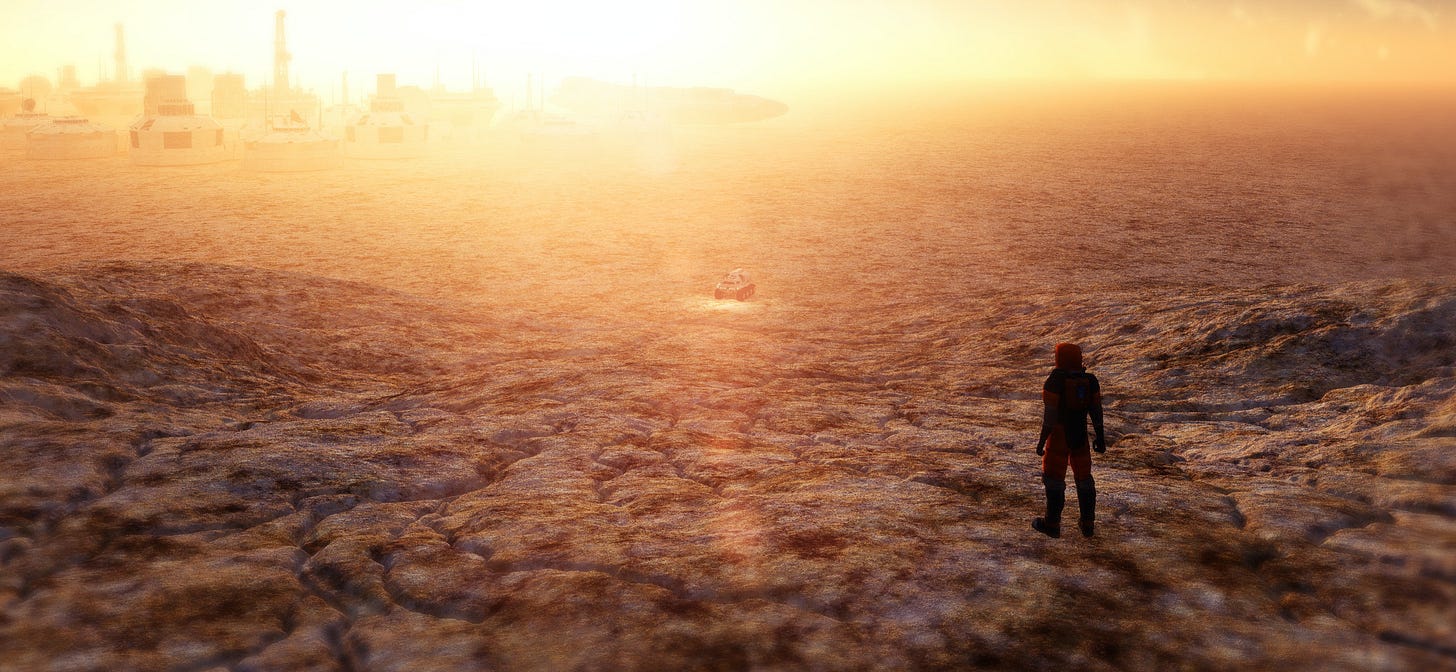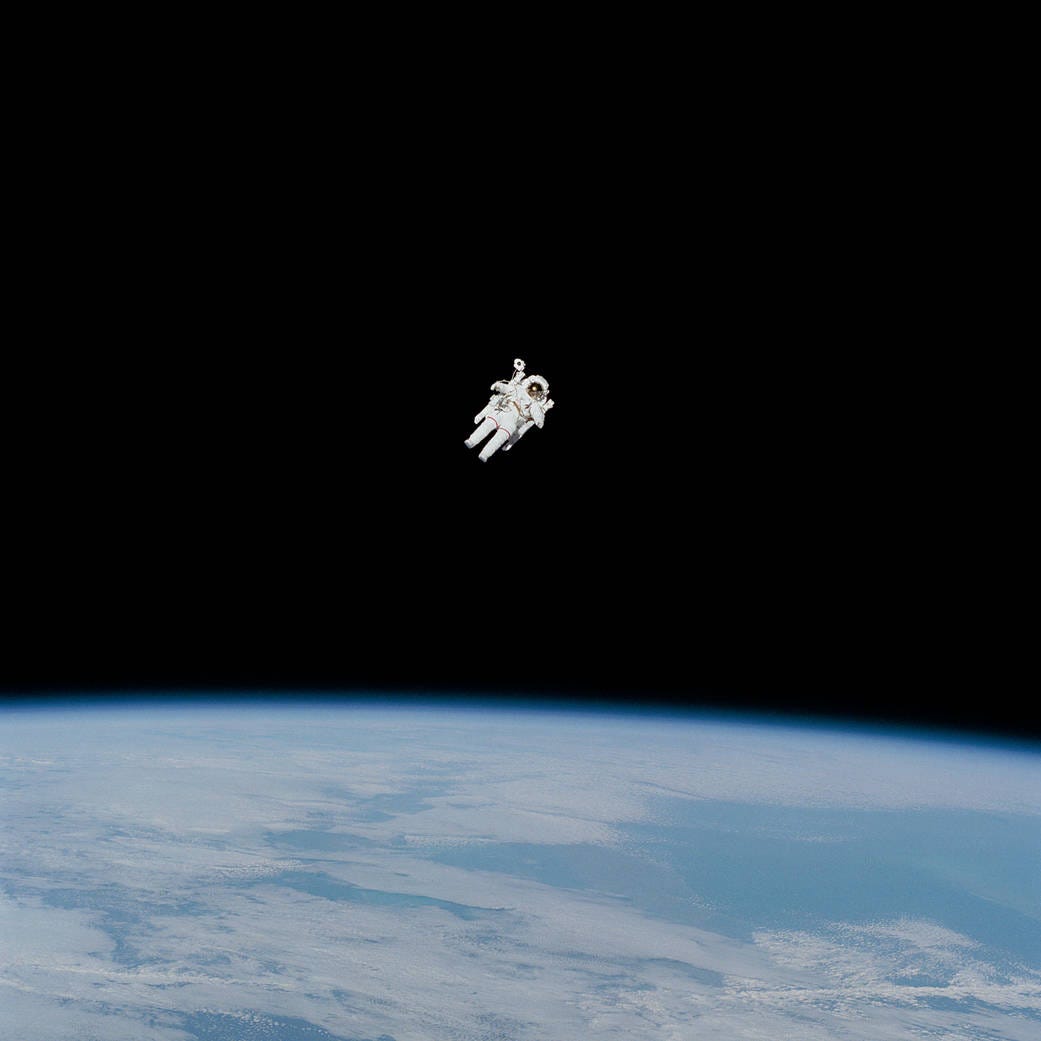
Thanks for finding Full Throttle. The newsletter will be delivered twice a week for free once you subscribe here. Follow me on Twitter, Instagram, and Linkedin.
Space travel is a risky business. If the worst happens, the death of an astronaut, how are the remains handled on orbit or on another planetary body? A more pressing question as NASA proposes a moon base and going on to Mars. We learned last month the agency is apparently now developing a policy of what happens if an astronaut dies in deep space.

(Credit: NASA)
This question has been asked for six decades. NASA’s first chief of bioethics, now Director of the Center for Ethics at Emory University, Dr. Paul Root Wolpe tells me, "this is not an easy policy to write... because all of the normal support and associated structures to deal with death and the dead body are not available in space." Dr. Wolpe wrote years ago about the ethics involved with this sensitive issue. He believes if an astronaut death happened on a short mission to the moon, “the craft would turn around and come back. But it gets thornier if the astronauts are on Mars, or even halfway there.”
A portion of Dr. Paul Wolpe's talk about ethics in space travel at UMBC in 2009. (Credit: UMBCtube)
MIXED MESSAGES
Is there a NASA policy right now?
Just last year Popular Science asked NASA to describe its stand on this issue. Journalist Shannon Stirone was provided this statement: “NASA does not prepare contingency plans for all remote risks. NASA’s response to any unplanned on-orbit situation will be determined in a real time collaborative process…” between various NASA leaders, the statement said.
Canadian Astronaut Chris Hadfield did write in his book, An Astronaut’s Guide to Life on Earth, that tabletop simulations were part of training. He wrote, “we have what we euphemistically refer to as ‘contingency sims - death sims,' actually.” He adds that several questions were posed- “Okay, what are we going to do with his corpse? There are no body bags on Station, so should we shove it in a spacesuit and stick it in a locker? But what about the smell?” Hadfield goes through some scenarios on handling a body including, “jettison it during a spacewalk and let it float away into space?”

(Credit: chrishadfield.ca)
2020-NO POLICY
Popular Science asked NASA about that, releasing remains in space, and the response came from the Office of Planetary Protection. “Currently, there are no specific guidelines in planetary protection policy, at either NASA or the international level, that would address ‘burial’ of a deceased astronaut by release into space,” Catherine Conley told the magazine. Releasing a corpse into space may not be part of what NASA is contemplating since the United Nations says all spacefaring nations should avoid releasing objects into space.
Plenty has been written about a 16-year-old study for NASA by a Swedish company that deals in “green burials.” Their recommendation involves placing the corpse in the cold of space and then shaking the brittle remains into a powdery dust for storage.

Image from the movie Gravity. (Credit: Warner Brothers)
"POLICY AND PROCEDURE"
All this is background to a report that NASA is now in the process of setting a policy involving “spaceflight participant death during the inflight phase of the human spaceflight mission.” This is according to Dr. Richard Williams who is a member of NASA’s Aerospace Safety Advisory Panel (ASAP). During ASAP’s quarterly meeting last month, the former NASA Chief Health and Medical Officer said the military and other stakeholders are contributing to the policy development.
“NASA is working with the FBI, the agency planetary protection officer, the armed forces, medical examiner and other partners to produce a policy and procedure to address death on orbit in deep space or on another planetary body,” Dr. Williams said. The policy will be issued ultimately at the NASA administrator level, he added.

(Credit: NASA)
That sounded like news to me since NASA doesn't have a specific policy. I asked the NASA headquarters about Dr. Williams' report to ASAP that the agency is now working with several stakeholders to set a policy.
PLANS VS. POLICY
NASA says I have it wrong. While the agency told Popular Science less than a year ago there is no policy, NASA sent me a statement that says it's always had plans for "all applications." “NASA has contingency plans in place during all phases of training and missions. We routinely re-visit and re-validate these plans, and update as needed including taking into consideration growing commercial partners/capabilities.”
That statement suggests death contingency plans in Low Earth Orbit (LEO) where commercial flights are currently concentrated. As Dr. Wolpe has suggested, remains would likely be returned to earth quickly. I asked NASA about deep space and other planetary bodies which is what Dr. Williams said specifically. NASA promised to "circle around" with me on Monday. No response came.
This is a sensitive issue. But as Dr. Wolpe has said for more than a decade and a half, everyone needs to know the policy- astronauts, families, and controllers- before we venture deep into space. It appears NASA is now working on that "thorny" issue as it prepares to send astronauts even deeper into space..
(Cover image credit: Getty Images)




